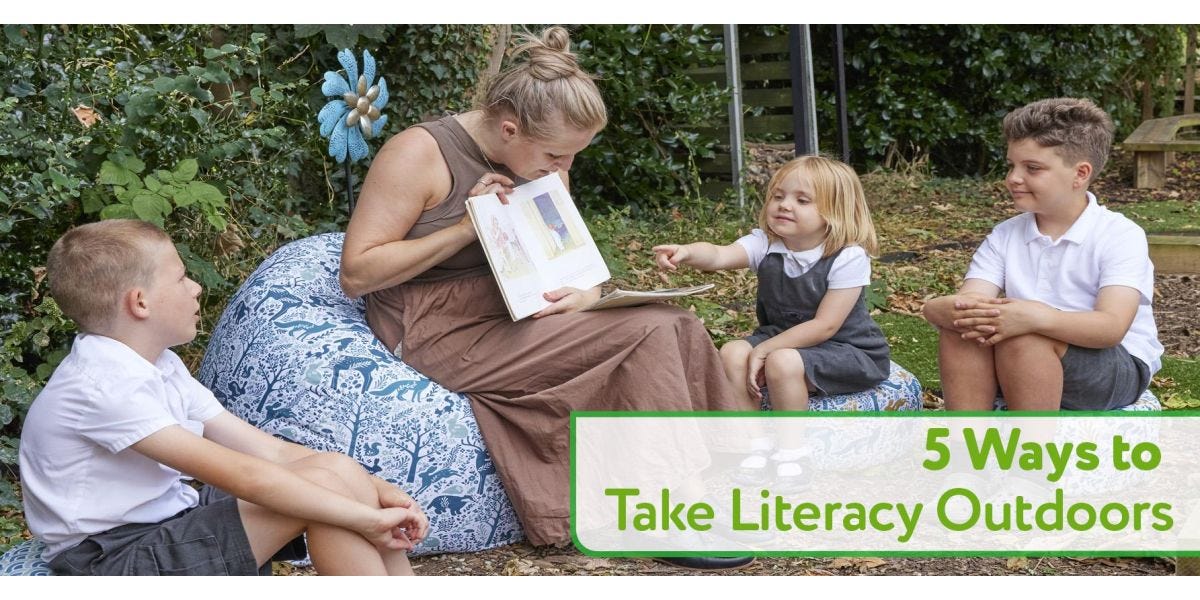The great outdoors really can boost learning! The fresh, oxygen rich air enriches brain cells optimising them and increasing alertness. The multi-sensory environment also contributes towards this, as does the space encouraging whole body movement. And with no walls increasing sound levels, communication is at an optimum, supporting a deeper understanding.
Phonics
Phonics sessions are most successful when children are engaged and the whole body and different senses are involved. Take younger children on a listening walk around the setting's grounds to support Phase 1 Phonics, encouraging them to record what they can hear through drawings, mark making or a tick chart. You could even make a diy headband with ears on to wear on your hunt! Older children could use our Caterpillar Phonics Chalkboards on the floor, table or wall to challenge those different muscles.
Reading
Placing a nice wicker basket of books along with a basket of cushions and blankets in your outdoor environment is a lovely way to encourage reading. Or you could create a reading den with the children and they can make it their special space. Reading chairs or thrones are another special and exciting way to encourage reading. You could add extra encouragement by hanging laminated characters, pictures and key words from children’s favourite stories from branches or a basket of teddy bears or stuffed animals to choose from and read to! Take your class story time outdoors from time to time too. Children will enjoy the novelty and the space to make themselves comfortable or even act out the story whilst they listen.
Writing
There are so many fun opportunities to encourage writing outdoors! Use chalk, wet paintbrushes or chalk paints to write on the ground, walls and fences. Use a stick in the mud or sand to mark make. Take some chalk pens out with you and find leaves to write words on to and join together to make sentences for older children. You could even punch holes and hone fine motor skills by threading them together. Use pieces of nature such as flowers, sticks and leaves to place on to the ground and create letters.
Speaking and Listening
Create a stage area by making some nature inspired bunting to hang, a basket of fabrics for costumes, dancing ribbons, hoops, stilts and other items that promote creative arts. Provide a basket of cushions for the audience. You can even buy an outdoor stage if your budget allows. Encourage communication with walkie talkies and telephone exchanges, you could make your own telephone exchange with string and cups! Speaking and listening is a ket aspect of team problem solving so any challenges you could set up, for example, ‘Can you build a pirate ship using these loose parts’ are perfect. For older children, you could extend further by asking them to research and to put together written plans, bringing in many other aspects of literacy too.














